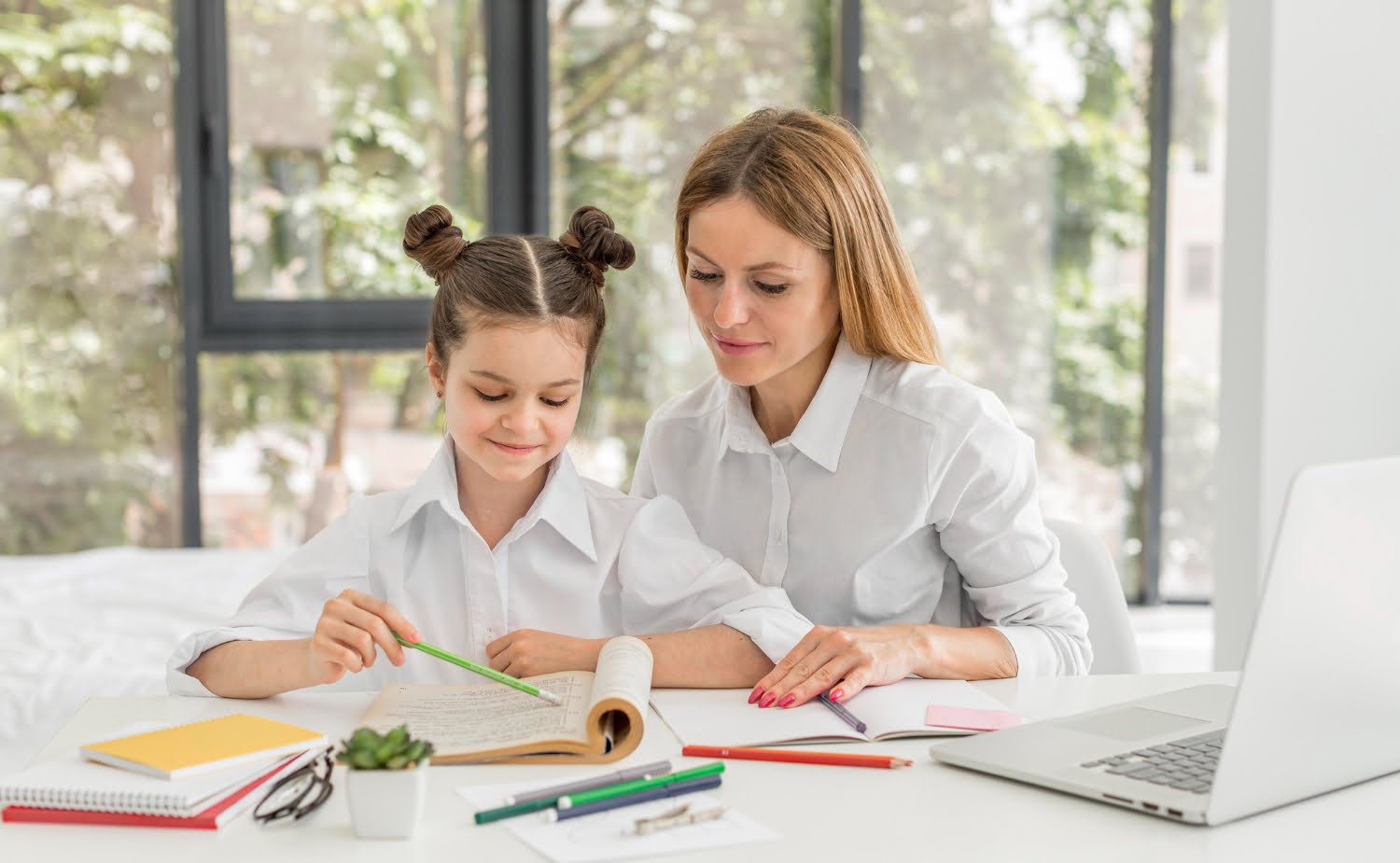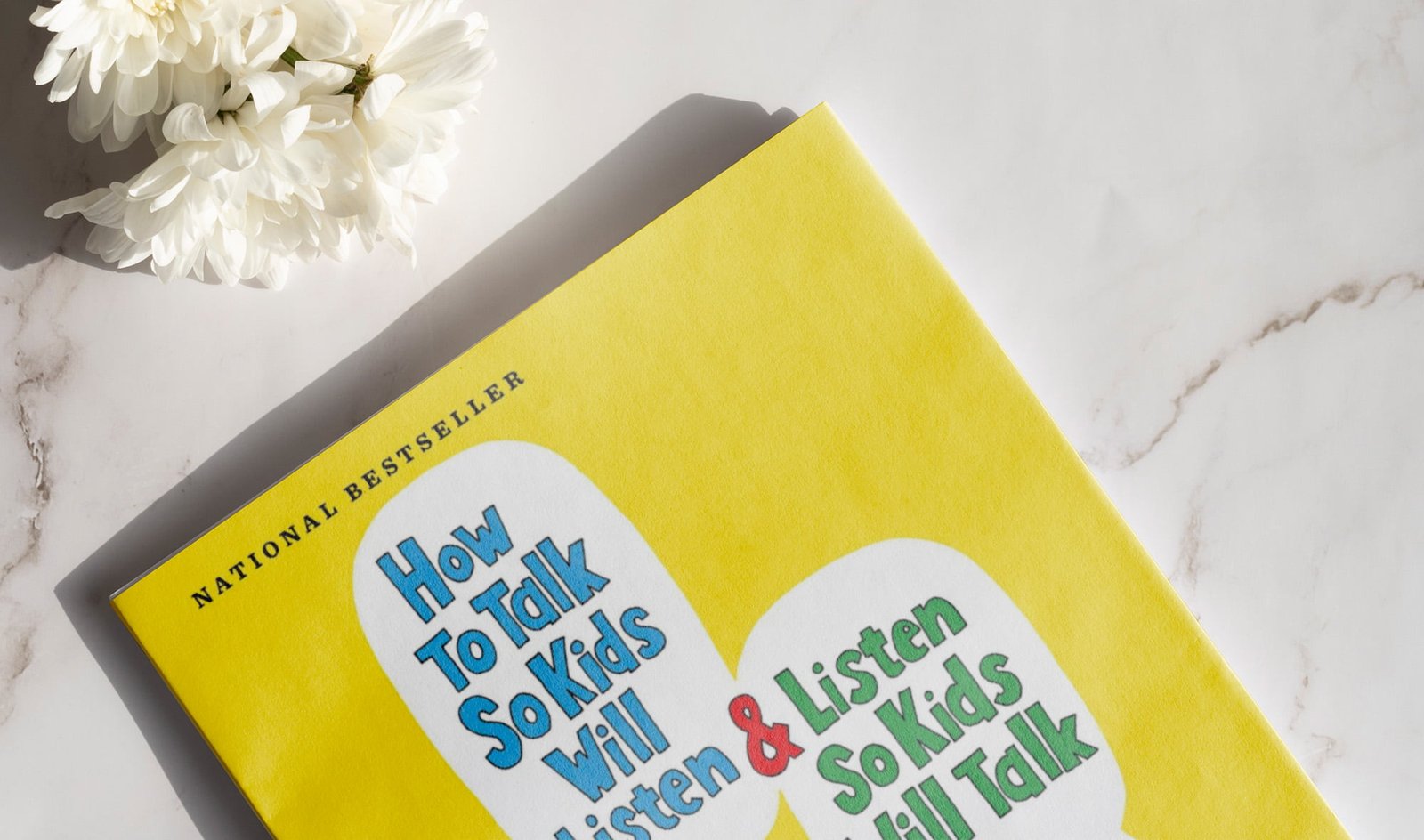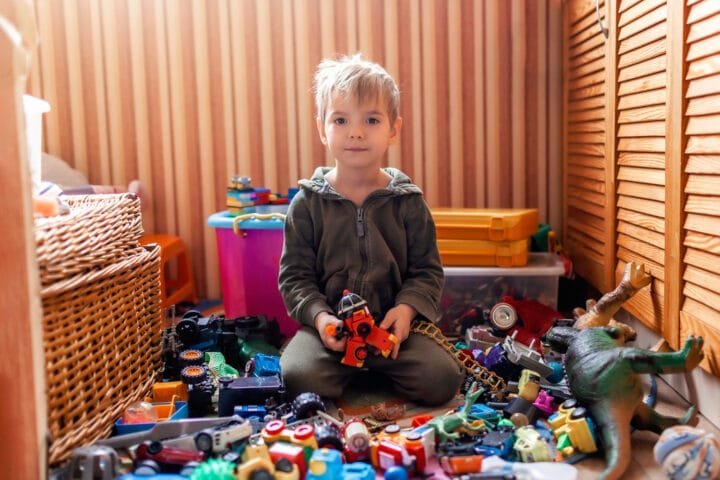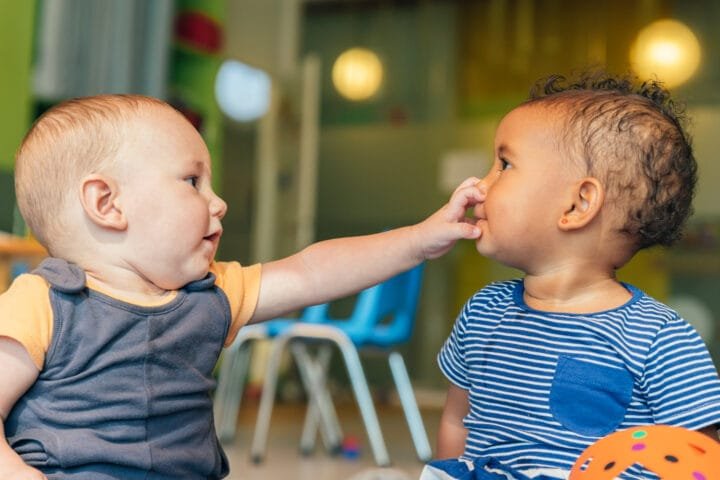When School Drop-Off is Heartbreaking: A Guide to Understanding and Addressing Crying at School
Introduction: My Child Misbehaves In School By Crying!
There’s no denying it: the morning school drop-off routine can be arduous. From bursting into tears and refusing to let go to endless negotiations, some mornings feel more like a hostage situation than a happy check-in to school. It is indeed disappointing to see our kids being in such a traumatized condition. Like other parents, we hear comments like, “They just want attention,” or “He’ll get over it when you go out of sight.” It’s easier said than done. But those tears? These aren’t just emotional reactions. These are thresholds for anxiety and fear. It’s not about painting kids as misbehaving but sensitizing and strengthening them. As a parent, your understanding and assistance are crucial in this endeavor.
This guide explores the reasons behind school crying, including the interplay of developmental stages, social anxieties, and school-specific stressors. We’ll provide practical strategies to help your child (and you!) navigate morning drop-off with greater ease and confidence. We’ll also discuss when those tears signal a need for professional help. We’ll also discuss how to empower your child to build resilience that extends beyond the classroom. Let’s transform those tearful goodbyes into confident strides into the school day!
Why the Tears? Uncovering the Reasons Behind School Crying
Ever feel like a detective deciphering a secret code? That’s what it feels like when your child cries at school drop-off. Understanding the root cause is critical to finding the right solution. Here’s a breakdown of the usual suspects:
Developmental Stages: Little Minds, Big Emotions
- Separation anxiety in young children. This is a normal phase in early childhood development. Their world revolves around you, their haven. Suddenly, you’re leaving them in a new environment with unfamiliar faces. It’s no wonder they feel anxious! Separation anxiety typically peaks around 10-18 months but can resurface as children start preschool or kindergarten. Ainsworth and Bell (1970) showed that secure attachment is crucial for emotional development and coping with separation. Those tears? They’re a sign of healthy attachment!
- Social anxieties emerge in older kids. As children grow, their social world expands, bringing new challenges. Navigating friendships, peer pressure, and fitting in can be overwhelming. School becomes a microcosm of society, with all its complexities and social anxiety. A study in the Journal of Abnormal Child Psychology found that social anxiety affects approximately 7% of children and adolescents. It manifests in various ways, including school avoidance and crying at drop-off.
School-Specific Stressors: Beyond the ABCs
- Academic pressure and performance anxiety. We’re used to viewing childhood as an age free of worries, but this is only partly true. Fulfilling expectations begins before adolescence. Exams, tests, marks, and scrutiny can overwhelm a young mind. While some get anxious, others get stressed about fulfilling school expectations. According to a 2015 study published by the American Psychological Association, students feel much more stressed during the school year than during the summer. Educational pressure greatly influences this outcome. Such pressure even causes young students’ drop-off to be hectic, as anxiety and crying are not uncommon.
- Friendship issues, bullying, or social exclusion. School can be an emotional minefield, even for little ones. The stare of friendship dramas, bullying and social exclusion are psychological traumas for children. What’s more, in an environment filled with layers of mock hierarchy and complex peers, such children tend to “have it really hard!” Studies show that such children view the bullying experience as one of the driving forces behind the development of anxiety, depression, school phobia and crying at drop off points.
- Difficulty with transitions or routine changes. Kids thrive on predictability. Changes in routine, transitions between activities, or even a substitute teacher can throw them off balance and trigger anxiety. This is particularly true for children with autism spectrum disorder or sensory processing sensitivities. A study in the Journal of Autism and Developmental Disorders found that children with autism exhibit higher anxiety levels during transitions and unpredictable situations.
Underlying Needs: Decoding Hidden Messages
- Unmet emotional needs (attention, comfort). Sometimes, tears express unmet emotional needs. They might crave attention, comfort, or reassurance. It’s their way of saying, “I need you.” Dr. Gordon Neufeld, a renowned developmental psychologist, emphasizes attachment and connection in a child’s emotional well-being. He suggests that tears at school drop-off can signify that a child needs to feel more connected to their caregiver before confidently separating.
- Difficulty expressing feelings or needs verbally. Young children don’t always have the vocabulary to express their feelings accurately. Frustration, fear, and sadness can all manifest themselves as tears. Crying becomes their primary way of communicating distress or discomfort. Experts in early childhood development emphasize helping children develop emotional literacy – the ability to identify and express their feelings healthily.
- Medical or psychological factors (anxiety disorders, etc.). In some cases, underlying medical or psychological factors contribute to school crying. Anxiety disorders, learning difficulties, or sensory processing issues can make the school environment overwhelming and trigger emotional distress. Regulating any underlying medical conditions and seeking professional support is essential.

From Tears to Triumph: Strategies for Parents
Are you overwhelmed? Take a deep breath. You’re not alone. Many parents face the school drop-off battle, and there are proven strategies that can help. Here’s your toolkit for turning those tearful goodbyes into confident “see you later!” These strategies can transform your mornings and your child’s experience at school.
Before School: Setting the Stage for Success
- Establish a consistent and predictable morning routine. Kids thrive on routine. A consistent morning routine reduces anxiety by providing predictability and control. Think of it as a comforting rhythm to their day. Early bedtimes, calm mornings with minimal screen time, and a predictable sequence of events (getting dressed, eating breakfast, brushing teeth) can make a big difference. Research shows that consistent routines contribute to children’s emotional regulation and reduce stress hormones.
- Practice separation through gradual exposure (playdates, short outings). Think of it like training wheels for separation! Gradual exposure helps children build confidence and independence. Start with short playdates at a friend’s house or quick in-store trips without you. This allows them to practice being away from you in a safe and supportive environment. Start small and gradually increase the separation duration as they become more comfortable.
- Role-play and talk about school positively. Role-playing is a powerful tool! Use stuffed animals or dolls to act out the school day, from arriving at the classroom to saying goodbye at the door. Talk about school positively and enthusiastically, emphasizing fun activities like playing with friends, singing songs, and learning new things. This helps create positive associations with school and reduces anxiety.
- Build strong communication with the teacher. Your child’s teacher is your ally! Open and honest communication is essential. Share your concerns, discuss your child’s personality and any triggers that might cause anxiety, and collaborate on a plan to support your child’s transition. The teacher can provide valuable insights into your child’s behavior and progress at school. He can be instrumental in creating a welcoming and supportive classroom environment.
During the School Day: Support and Collaboration
- Collaborate with the teacher on a support plan. Work with the teacher to create a personalized support plan tailored to your child’s needs. This might involve a particular signal between the teacher and your child. It might also involve a designated “safe space” in the classroom where your child can calm down or regular check-ins throughout the day to reassure them that you’re thinking of them. The key is to create a sense of safety and security in the school environment.
- Consider a “comfort object” or a transitional item. A favorite stuffed toy, a cozy blanket, or even a strange stone taken from the backyard may provide comfort and security. Encourage your child to carry such a comfortable object to school, mainly when settling into a changing environment. It is like leaving a small part of the entire house.
- Utilize visual schedules or reminders for transitions. Children’s understanding of daily events is fostered when they can anticipate transitions, like moving from one activity to the next. This is done by switching from one location to another. Pictures are advantageous for children with limited language skills or visual learners. As a consequence, certainty undermines expectations, thereby reducing anxiety. Visual schedules serve as day planners.
At Home: Nurturing and Empowerment
- Create a calm and supportive environment. Home should be a haven of peace and security. Create a calm and supportive environment where your child feels safe to express their feelings without judgment. Avoid overscheduling after-school activities and prioritize downtime. Allow time for free play, relaxation, and connection. Research shows that children with adequate downtime can better regulate their emotions and cope with stress.
- Validate your feelings and listen actively. When your child expresses anxiety about school, listen with your whole heart. Resist the urge to dismiss their fears with a “Don’t be silly!” or “There’s nothing to be scared of.” Instead, validate their feelings. Say things like, “I hear that you’re scared about coming to school. It’s okay to feel that way.” Get down on their level, make eye contact, and pay attention to what they’re expressing (or not saying!). Active listening builds trust and helps them feel understood.
- Teach them coping skills and emotional regulation techniques. Equipping your child with coping skills is like giving them a superhero toolkit for managing their emotions. Deep breathing exercises, mindfulness activities (even something as simple as noticing the sounds around them), or progressive muscle relaxation techniques can help them manage anxiety and stress. Age-appropriate resources are available, from books and apps to YouTube videos. Find what works for your child and practice these techniques together.
- Reinforce positive behaviors and school successes. Celebrate every victory, no matter how small! Did they walk into the classroom without crying today? High fives! Did they make a new friend? That’s amazing! Positive reinforcement builds confidence and encourages positive behaviors. Focus on their strengths and acknowledge their efforts. A simple “I’m so proud of you for trying your best” can go a long way.

When to Seek Professional Help: Recognizing the Signs
We all have those days where we don’t want to go to school (or work, let’s be honest!). If your child’s crying persists despite your best efforts, and you’re constantly searching for solutions to ‘My child misbehaves at school by crying,’ it might be time to seek professional help:
- Despite your efforts, the crying continues for an extended period. If weeks (or even months) have passed and the tears haven’t subsided, it might signal something more profound.
- Your child exhibits other signs of anxiety or distress. These might include sleep disturbances, appetite changes, or withdrawal from activities they used to enjoy. These are red flags that shouldn’t be ignored.
- Crying interferes with your child’s academic progress or social interactions. If their anxiety prevents them from learning, making friends, or participating in class, seeking professional guidance is crucial.
Therapists, counsellors, and school psychologists help children navigate these challenges. They can identify the underlying issues, develop coping strategies, and provide emotional regulation tools. Don’t hesitate to reach out! Early intervention can make a world of difference.
Empowering Your Child: Building Resilience and Confidence
Ultimately, we aim to raise resilient, confident kids who can face challenges head-on. Here’s how to foster independence and emotional strength:
- Focus on strengths and build self-esteem. Every child has unique strengths and talents. They could be budding artists, math whizzes, or natural leaders on the playground. Focus on those strengths and celebrate their accomplishments. This helps build self-esteem and a “can-do” attitude that carries them through challenges.
- Foster independence and problem-solving skills. Instead of jumping in to solve every problem, encourage your child to think critically and find solutions independently. Offer guidance and support but allow them to take the lead. This fosters independence and problem-solving skills that will serve them well throughout life.
- Teach yourself positive self-talk and coping mechanisms. Positive self-talk can be powerful. Teach your child to replace negative thoughts like “I can’t do this” with more empowering statements like “I can try my best” or “I’m going to give it a go.” Equip them with a toolbox of coping mechanisms to manage stress and anxiety, such as deep breathing, taking a break, or talking to a trusted adult.
- Celebrate successes and progress, no matter how small. Every step taken, no matter how small, should be acknowledged and celebrated. Did they detach themselves from you easier today? Did they raise their hands in class? Did they participate in a new activity? Rejoice in those victories! This reinforces positive behavior and inspires further progress.
A Real-Life Story: When My Own Superhero Faced School Fears
I remember my son Ethan’s first day of kindergarten vividly. He was a curious and energetic little boy who loved to explore, but the excitement was nowhere to be seen on that first day of school. He latched onto me like a koala, crying inconsolably. My heart ached for him. I tried everything—gentle words, promises of ice cream after school, even a few (very mild) bribes. Nothing worked. Finally, I had to pry his little fingers off me and leave him sobbing in the classroom. I felt like the most horrible mom in the world.
That day, I cried all the way home. I called my mom, best friend, and even the pediatrician, desperate for advice. We devised a plan—a unique “kissing hand” ritual, a comfort object (his favorite stuffed dinosaur), and daily check-ins with his teacher. Slowly but surely, the tears subsided. He started making friends, participating in class, and even enjoying school! It wasn’t a magic overnight solution, but we weathered the storm together with determination, calmness, and affection.
That experience taught me valuable lessons about my child and myself, as well as the power of empathy, listening, and teamwork. It reminded me that a parent’s love and encouragement make all the difference.

Summary: A Path Towards Positive School Experiences
Leaving children at school can be challenging for both parents and children. There does not have to be a need to recall those tearful instances in school history; quite a lot of knowledge, strategies, and the right amount of support are all required to forget about them.
Always remember that it is a journey, you are not alone. Collaborate with your child’s teacher, reach out to friends and family, and seek professional help when necessary. We must teach our children how to cope with pressure, build resilience, and look inward to gain self-respect to empower them. That, in turn, allows them to survive and thrive in school. Let’s work hand in hand to ensure parents understand how to turn goodbyes into smiles and walk into school.
Essential Reading for Parents of Anxious Children
To further support you on your journey, we’ve compiled a list of essential reads offering valuable insights and practical strategies for understanding and addressing childhood anxiety:
For Parents:
- The Whole-Brain Child by Daniel J. Siegel and Tina Payne Bryson: This book explores the inner workings of a child’s brain and provides effective strategies for nurturing emotional intelligence and resilience.
- Raising an Emotionally Intelligent Child by John Gottman: This book offers practical guidance on helping children understand and manage their emotions, build strong relationships, and thrive in challenging situations.
- Anxious Kids, Anxious Parents by Reid Wilson and Lynn Lyons: This book provides a compassionate and effective approach to helping both children and parents manage anxiety and create a calmer family environment.
- Freeing Your Child from Anxiety by Tamar Chansky: This book offers a step-by-step program for parents to help their children overcome anxiety and develop coping skills.
For Children:
- The Kissing Hand by Audrey Penn: This heartwarming story helps young children cope with separation anxiety and feel more secure when starting school.
- First Day Jitters by Julie Danneberg: This relatable story addresses the common fears and anxieties associated with the first day of school in a humorous and reassuring way.
- Wemberly Worried by Kevin Henkes: This gentle story explores the experience of anxiety in a way that young children can easily understand and relate to.
- The Invisible String by Patrice Karst: This comforting story reassures children that they are always connected to their loved ones, even when they are apart.
FAQs
Yes, it’s completely normal. Separation anxiety is a common and developmentally appropriate phase for young children. It’s a sign of their attachment to you and their discomfort with being in a new environment without their primary caregiver.
Having a clear step-by-step plan for the morning movement and sticking to a time schedule can be helpful for your child as it creates an expectation about the events of the day. Breaks in contact can be practiced gradually by starting with shorter times and progressively increasing the period. Practicing these methods can be advantageous. Discussing this with your child’s teacher is essential to ensure that the necessary support is available in school.
If your child’s crying persists despite your best efforts, or if they show other signs of anxiety or distress, it’s essential to seek professional help. A therapist, counsellor, or school psychologist can provide the support and guidance you and your child need.
Focus on their strengths, foster independence, teach positive self-talk, and celebrate their successes. Equipping them with coping mechanisms like deep breathing exercises can also be beneficial.
Parenting is often not so easy; giving in on occasion to their child’s demands not only leads to fear or anxiety but also reinforces negative behavior. Anger management is critical in parenting, as children require much patience.
Related Posts















































































